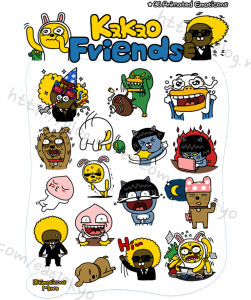I found an article on commonalities between digital games and literacy by Apperley and Walsh, which articulates the significant educational value, particularly in the area of literacy for classroom activities. Direct quoting from Apperley and Walsh’s article, “By including the reading, writing and design of digital game paratexts (gaming language) in the literacy curriculum, teachers can actively and legitimately include digital games in their literacy instruction.” It assists teachers in identifying the elements of game play that would be appropriate for the demands of the literacy curriculum.
I have been discussing with colleagues about implementing gaming into classroom, and apparently, some people dislike the idea of taking away the fun part from what the students like to do and forcibly turning it into something educational. However, I understand the whole implementation of gaming as using the pre-existing gaming literacy skills into literacy teaching and curriculum rather than using it as a motivator as if we are trying to persuade students to feel the same kind of “fun” while learning. Young people already play by a certain set of “rules” in their gaming spaces, using characteristic tools and language, and holding certain values. There must be a value in gaming and teachers are trying to take away the goodness in it like what Apperley and Walsh are trying to argue: “[gaming literacy] provides an authentic segue between [the students’] immersion in gaming culture and gameplay practices and school-based literacy outcomes.” There is a strong correlation between the two, and I believe that it is the educators’ responsibility to make every means applicable to learning.
Then it comes down to the issue of “content.” I agree with Gee on the point that we certainly do “learn, use, and retain lots and lots of facts” (content), and these “facts come from and with the doing.” We discussed the value of bringing gaming into English language art classrooms during the seminar. I personally love playing video games, RPG (role-playing games), smartphone games, and all kinds of games in general. (I used to play video games until I realized that it was morning…) With that being said, I strongly agree with the idea that games incorporate learning principles. I personally think that I have been significantly influenced by
Also, to support the quality and validity of literature in games, I want to draw attention to novelization of some games. There are great examples not only in North America, but the market is much larger in Asia. Video games transform into novels, movies, and comic books with considerable popularity. We do not even need to force our students to write a game script to make the topic applicable to English Language Art classes; just by discussing and treating it as a genre of literature and literacy, I think gaming has a space for education and learning in English classrooms.
Apperley, T., & Walsh, C. (2012). What digital games and literacy have in common: A heuristic for understanding pupils’ gaming literacy. Literacy, 46(3), 115-122.
Gee, J. (2005). Good Video Games and Good Learning. Phi Kappa Phi Forum, 85(2), 33-37.

